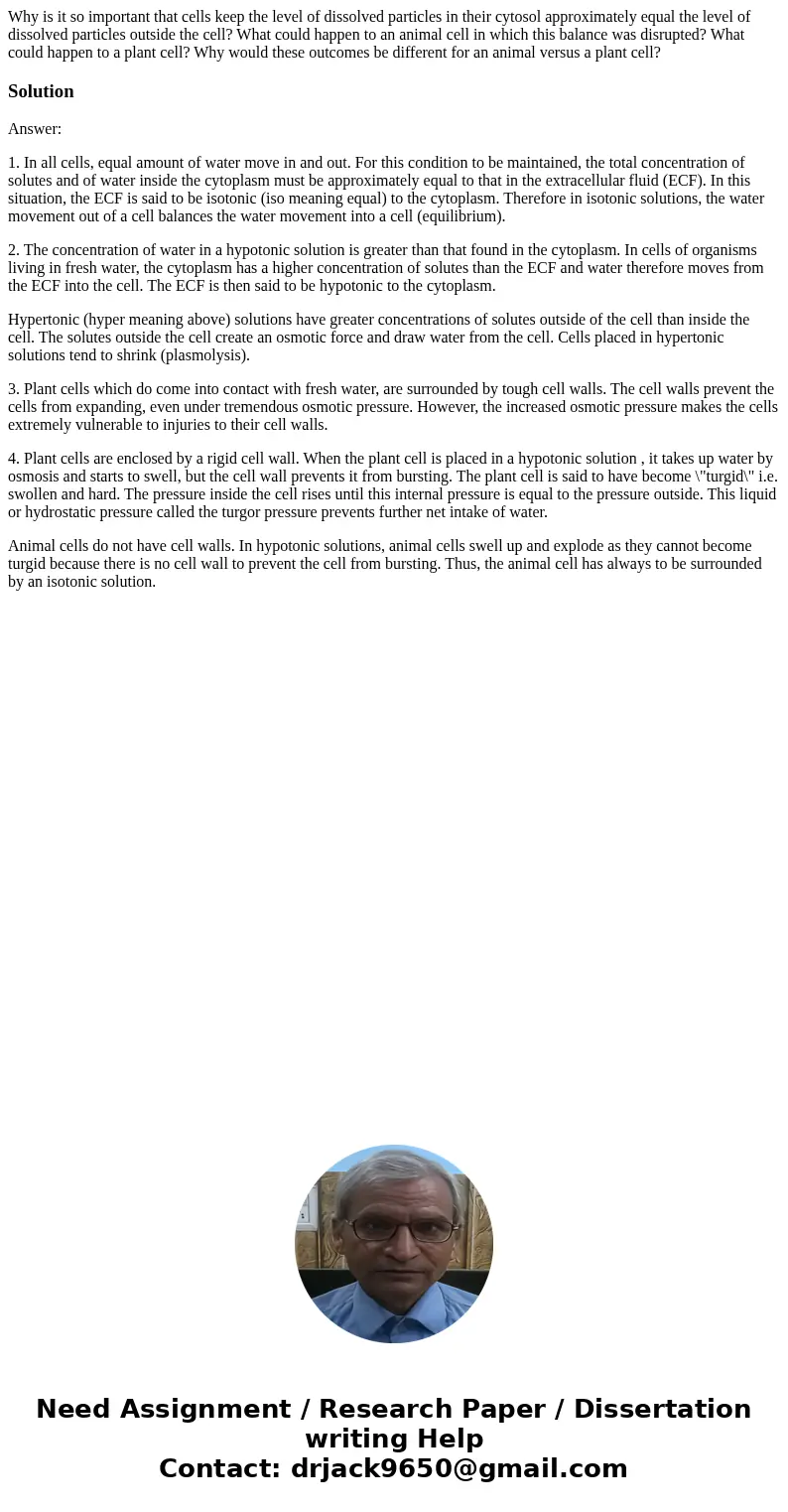Why is it so important that cells keep the level of dissolve
Why is it so important that cells keep the level of dissolved particles in their cytosol approximately equal the level of dissolved particles outside the cell? What could happen to an animal cell in which this balance was disrupted? What could happen to a plant cell? Why would these outcomes be different for an animal versus a plant cell?
Solution
Answer:
1. In all cells, equal amount of water move in and out. For this condition to be maintained, the total concentration of solutes and of water inside the cytoplasm must be approximately equal to that in the extracellular fluid (ECF). In this situation, the ECF is said to be isotonic (iso meaning equal) to the cytoplasm. Therefore in isotonic solutions, the water movement out of a cell balances the water movement into a cell (equilibrium).
2. The concentration of water in a hypotonic solution is greater than that found in the cytoplasm. In cells of organisms living in fresh water, the cytoplasm has a higher concentration of solutes than the ECF and water therefore moves from the ECF into the cell. The ECF is then said to be hypotonic to the cytoplasm.
Hypertonic (hyper meaning above) solutions have greater concentrations of solutes outside of the cell than inside the cell. The solutes outside the cell create an osmotic force and draw water from the cell. Cells placed in hypertonic solutions tend to shrink (plasmolysis).
3. Plant cells which do come into contact with fresh water, are surrounded by tough cell walls. The cell walls prevent the cells from expanding, even under tremendous osmotic pressure. However, the increased osmotic pressure makes the cells extremely vulnerable to injuries to their cell walls.
4. Plant cells are enclosed by a rigid cell wall. When the plant cell is placed in a hypotonic solution , it takes up water by osmosis and starts to swell, but the cell wall prevents it from bursting. The plant cell is said to have become \"turgid\" i.e. swollen and hard. The pressure inside the cell rises until this internal pressure is equal to the pressure outside. This liquid or hydrostatic pressure called the turgor pressure prevents further net intake of water.
Animal cells do not have cell walls. In hypotonic solutions, animal cells swell up and explode as they cannot become turgid because there is no cell wall to prevent the cell from bursting. Thus, the animal cell has always to be surrounded by an isotonic solution.

 Homework Sourse
Homework Sourse